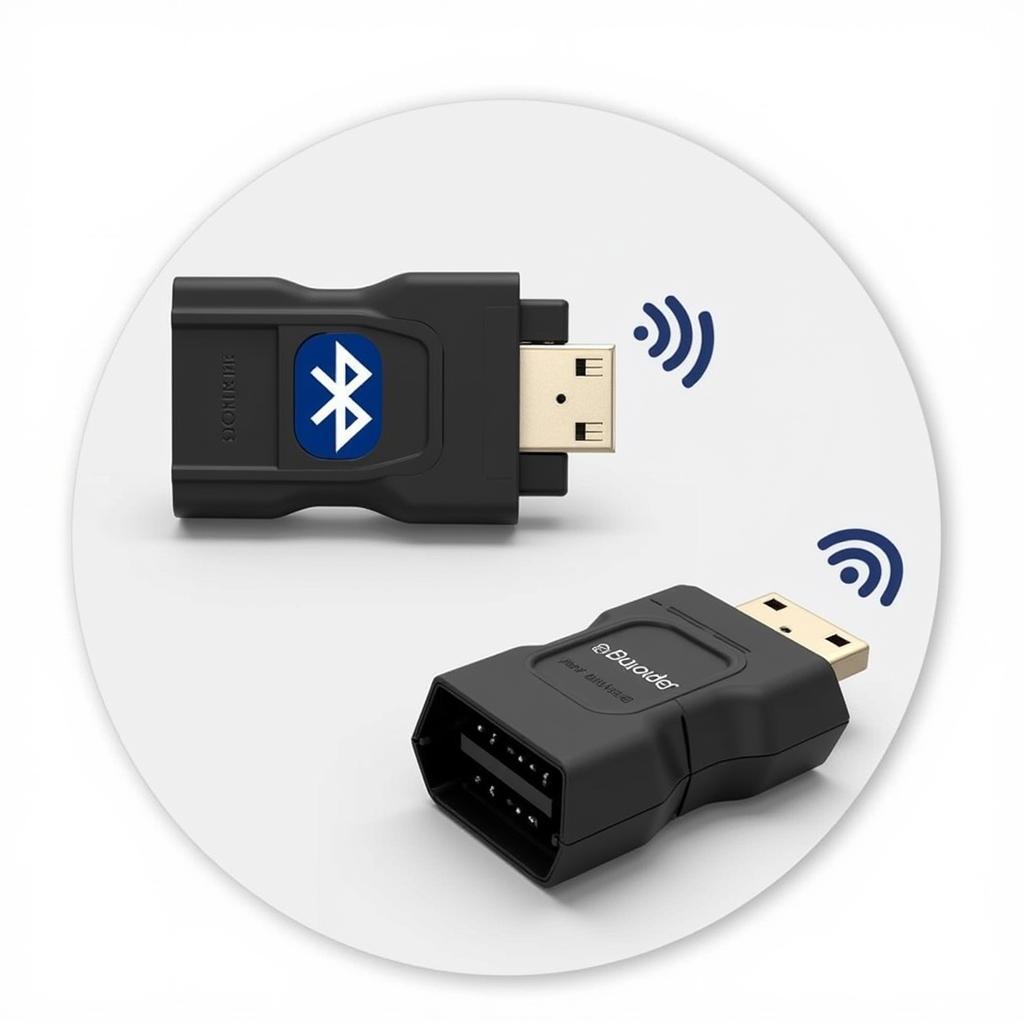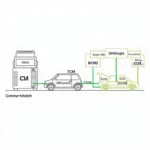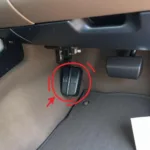An OBD2 dongle for Android is a small device that plugs into your car’s OBD2 port, allowing you to connect your Android phone or tablet to your vehicle’s computer system. This connection unlocks a treasure trove of information about your car’s performance, health, and potential issues. Whether you’re a car enthusiast wanting to monitor engine data or a DIY mechanic looking to diagnose problems, an OBD2 dongle can be an invaluable tool.
How to Choose the Right OBD2 Dongle for Your Android Device
With a plethora of OBD2 dongles available, choosing the right one can be daunting. Here’s a breakdown of the key factors to consider:
1. Connection Type: Bluetooth vs. Wi-Fi
OBD2 dongles primarily connect to Android devices via Bluetooth or Wi-Fi:
- Bluetooth Dongles: These are generally more affordable and offer good compatibility with most Android devices. However, their range is limited, and connection stability can be affected by interference.
- Wi-Fi Dongles: These provide faster data transfer speeds and a longer range than Bluetooth. However, they tend to be pricier and may drain your phone’s battery faster.
2. Compatibility with Your Vehicle
Ensure the dongle you choose is compatible with your car’s make, model, and year. Most dongles support a wide range of vehicles manufactured after 1996, but it’s crucial to double-check compatibility before purchasing.
3. Supported Apps and Features
Different OBD2 dongles work with specific apps, each offering various features. Consider the features most important to you:
- Basic Diagnostics: Reading and clearing engine fault codes.
- Live Data Monitoring: Viewing real-time data like engine RPM, speed, coolant temperature, etc.
- Performance Tracking: Recording and analyzing acceleration times, braking distances, and other performance metrics.
- Advanced Features: Some apps offer functionalities like DPF regeneration, ABS bleeding, and other advanced diagnostics.
4. User Reviews and Ratings
Before making a purchase, research and read reviews from other users to gauge the dongle’s reliability, ease of use, and customer support.
Setting Up Your OBD2 Dongle and Android Device
Once you’ve chosen your dongle, setting it up is usually straightforward:
- Locate Your OBD2 Port: The port is typically located under the dashboard on the driver’s side, often near the steering column.
- Plug in the Dongle: Insert the dongle firmly into the OBD2 port.
- Pair Your Device: Turn on your car’s ignition (engine off) and enable Bluetooth or Wi-Fi on your Android device.
- Install and Launch the App: Download and install a compatible OBD2 app from the Google Play Store. Open the app and follow the on-screen instructions to pair it with the dongle.
Exploring the Possibilities: What Can You Do With an OBD2 Dongle?
An OBD2 dongle, combined with a powerful Android app, can empower you with valuable insights and control over your car’s functions:
1. Diagnose Engine Problems:
The most common use for an OBD2 dongle is reading and clearing engine fault codes. When the “Check Engine” light illuminates on your dashboard, the dongle can retrieve the error code, helping you understand the issue and determine if it requires professional attention.
2. Monitor Real-Time Performance:
Enthusiasts and performance-oriented drivers can benefit from monitoring live data such as:
- Engine RPM: Track engine speed in real time.
- Speed: Compare your car’s actual speed with the speedometer reading.
- Coolant Temperature: Ensure your engine is operating within the optimal temperature range.
- Oxygen Sensor Readings: Monitor the efficiency of your catalytic converter.
- Fuel System Status: Keep an eye on fuel pressure and delivery.
3. Enhance Fuel Efficiency:
By analyzing driving habits and fuel consumption data, you can identify areas for improvement and adopt a more economical driving style.
4. Track Your Trips and Mileage:
Some OBD2 apps can automatically log your trips, providing valuable information for business expenses or personal record-keeping.
Advanced Features: Taking Your Diagnostics to the Next Level
While basic OBD2 dongles offer essential functionalities, advanced options provide even more capabilities:
- DPF Regeneration: Force a Diesel Particulate Filter regeneration cycle for diesel vehicles.
- ABS Bleeding: Assist in bleeding the Anti-lock Braking System.
- Battery Monitoring: Check battery health and voltage.
- ECU Programming: Certain advanced dongles allow for limited ECU reprogramming for performance tuning (requires specialized knowledge and caution).
Choosing the Right App for Your Needs
The OBD2 app you choose plays a significant role in unlocking the full potential of your dongle. Popular and well-regarded options include:
- Torque Pro: A highly-rated app offering extensive features, customization options, and a user-friendly interface.
- OBD Fusion: Another popular choice with a clean interface, real-time gauges, and data logging capabilities.
Troubleshooting Tips: Common Issues and Solutions
While OBD2 dongles are generally reliable, you might encounter occasional issues. Here are some common problems and their solutions:
- Connection Problems: Ensure Bluetooth or Wi-Fi is enabled on your device and the dongle is paired correctly. Try restarting your phone and car.
- App Crashes: Make sure you’re using a compatible app and check for updates. If the issue persists, contact the app developer for support.
- Data Not Displaying: Verify that the app is configured correctly for your car’s make and model. Some parameters might require specific settings.
Conclusion: Empowering Car Owners With Information
An OBD2 dongle for Android can be an invaluable tool for anyone who wants to gain a deeper understanding of their vehicle. Whether you’re a tech-savvy car owner or a DIY mechanic, an OBD2 dongle puts the power of diagnostics and information at your fingertips.
By choosing the right dongle, a compatible app, and exploring the wealth of information available, you can unlock a new level of control, efficiency, and understanding of your car.
FAQs about OBD2 Dongles for Android
Q1: Will an OBD2 dongle drain my car battery?
Most dongles have a low power consumption and shouldn’t drain your battery significantly. However, it’s best to unplug it when not in use, especially if you’re leaving your car parked for an extended period.
Q2: Are OBD2 dongles safe for my car?
Reputable dongles are designed to be safe and won’t harm your vehicle’s electronics. However, it’s essential to choose a dongle from a trusted brand and avoid using unknown or modified dongles.
Q3: Can I use an OBD2 dongle with multiple cars?
Yes, most OBD2 dongles are compatible with a wide range of vehicles manufactured after 1996. You can switch between cars seamlessly as long as they have the standard OBD2 port.
Q4: Do I need an internet connection to use an OBD2 dongle?
While an internet connection isn’t required for basic functionalities like reading fault codes, certain features like live mapping, location-based services, or app updates may require internet access.
Q5: What’s the difference between an OBD2 dongle and a code reader?
A basic code reader can only read and clear engine fault codes. An OBD2 dongle offers a broader range of features, including live data monitoring, performance tracking, and advanced diagnostics, all accessible through your Android device.
Looking for a reliable and affordable OBD2 dongle? Check out the Thinkcar Thinkdiag Bluetooth OBD2 Dongle 301180767, a great option for both beginners and experienced users. For detailed instructions on using the Torque Pro app with your OBD2 dongle, visit our Instruction Torque Pro OBD2 & Car page.
Need further assistance? Our dedicated customer support team is available 24/7 to answer your questions and guide you through any challenges. Contact us via WhatsApp: +1(641)206-8880 or Email: [email protected].


